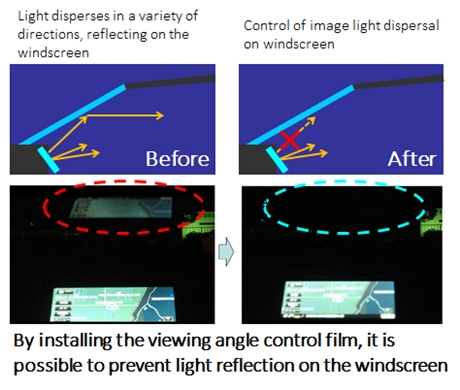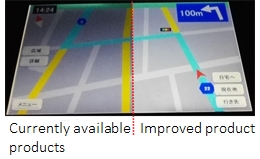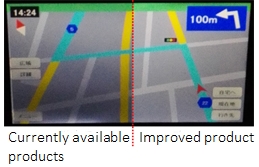DNP Develops Additional In-Vehicle Display Viewing Angle Control Film
Will significantly increase freedom of design for instrument panels
Dai Nippon Printing Co., Ltd. (DNP) has developed a new product to add to the existing series of originally developed in-vehicle display viewing angle control films offered since 2015.
The series is designed to prevent light reflection from in-vehicle displays on the windshield, increase visibility from the driver’s seat, and heighten freedom of design, while being compatible with next-generation car navigation systems.
The film works to prevent light reflection from car navigation systems on windshields at night, and as a result, has been adopted by multiple automobile manufacturers, both in Japan and overseas.
In this latest development, DNP has further improved existing viewing angle control functions, allowing for the free control of display light either from head on, or on either vertical or horizontal angles to the in-vehicle display, and has successfully developed a light control film that boosts design freedom, including the display installment angle.
By integrating this optimal viewing angle control film to match the installation point for in-vehicle displays, such as car navigation devices and the speedometer, it is possible to prevent these devices becoming a driving hindrance.

[Background]
In-vehicle Liquid Crystal Displays (LCD) are used in car navigation systems and speedometers situated close to the driver, which makes it difficult to view the road ahead, particularly at night, due to the reflection of the display images on the windshield, producing increased safety-loss risks. Faced with this challenge, from 2015 DNP has offered an in-vehicle display viewing angle control film that capitalizes on the light control technology developed in the creation of various display optical films, and controls display image lighting by focusing it directly ahead of the viewer to avoid reflection on the windshield that would hamper the driver. In this latest development, the Company has improved the viewing angle control film function to facilitate the focus of light on the driver’s seat from a variety of directions so as to match the installation point of in–vehicle display equipment and their size.
[Features of New Viewing Angle Control Film]
The viewing angle control film controls the direction of the light via fine louver slat-like patterns formed in the film. In this latest development, DNP has capitalized on its state-of-the-art optical design, die cutting, and microfabrication technology to arbitrarily govern the control function, not only in a pre-existing fixed directions, but also on vertical and linear planes. Fine patterns have been customized on a product-basis, controlling light trajectory in an optimal direction. As a result, the design freedom governing instrument panel components that had been limited to date can now be designed freely from the standpoint of visibility and image reflection.
[Cases of Integration with a Variety of In-Vehicle Display Equipment]
Next-generation in-vehicle display devices installed in a near horizontal angle to instrument panels with enhanced design qualities
By using a viewing angle control film that concentrates light, such as images, in a downwards fashion, visibility from the driver's seat has been improved and reflection onto the windshield prevented.

In-vehicle display devices installed in a near vertical fashion in the low position of the driver's seat
By using viewing angle control film that concentrates light, such as images, in an upward direction, visibility from the driver's seat has been improved and reflection onto the rear window prevented.

Large-scale in-vehicle display equipment
By using viewing angle control film that controls light in a linear fashion, visibility from the driver's seat has been improved over the linear scope of the large scale display, and reflection onto the front window prevented,.
[Looking Ahead]
DNP will propose the in-vehicle display viewing angle control film mainly to automakers both in Japan and overseas, along with in-vehicle display device makers, aiming for a five-fold increase in annual sales to 5.0 billion yen by 2022.
* Product prices, specification and service contents mentioned in this news release are current as of the date of publication. They may be changed at any time without notice.
- Select location
-
- Category
-